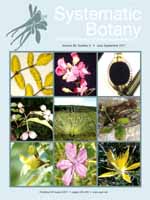Most perennial species of Erodium have medium to high pollen/ovule (P/O) ratios and are dichogamous mixed-mating species endemic to the mountain ranges of the Mediterranean. In contrast, the annual species of this genus, which are often adapted to disturbed sites, are adichogamous selfers with low P/O ratios and wide distributions. According to the present reconstruction of the evolution of Erodium, recurrent perennial to annual shifts occurred from a time earlier than the establishment of the Mediterranean climate during the Pleistocene. The diversification of the terminal clades containing annuals and perennials is dated to 6.4–2 Mya, between the onset of the Messinian (Miocene) and the end of the Pliocene. By adapting to several types of breeding systems (mixed-mating and selfing), many species of Erodium were able to meet the challenges of climatic deterioration and the changes in pollinators that took place at the end of the Tertiary. High selfing and an annual lifespan seem to have evolved multiple times together, but reversions may also have occurred. Within-plant variation of herkogamy and dichogamy may represent adaptations to variation in the pollinator community during dry or cold periods.
How to translate text using browser tools
1 July 2011
Evolution of Pollen/Ovule Ratios and Breeding System in Erodium (Geraniaceae)
María Luisa Alarcón,
Cristina Roquet,
Juan José Aldasoro
ACCESS THE FULL ARTICLE

Systematic Botany
Vol. 36 • No. 3
July 2011
Vol. 36 • No. 3
July 2011
breeding system
dating
disturbance
molecular phylogeny
trnL-F




